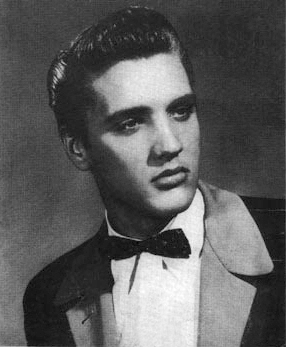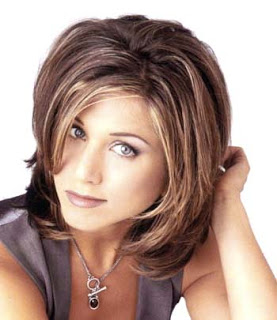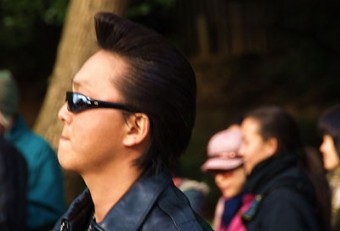The History Behind the Names of Various Hairstyles
It is one of the first things we notice about someone upon being introduced: Hair. Even Donald Trump’s combover, or whatever you call that thing on his head, has its own Facebook page, but only 51 Likes. Here’s a look back over the years at the various ways we’ve styled our locks and the origin of the names of those hairstyles.
This hairstyle dates back to 1721, and has managed to make a comeback in modern days. Pompadours became all the rage thanks to Madame de Pompadour, a mistress of King Louis XV. She wore the hairstyle, inspiring a fad that became popular for a time- then not- then revived in the 1890s-1910s- then disappearing for a couple decades- and once again revived for high-society women in the 1940s. By the 1950s, men were wearing a version of the look that is all about elevation of the hair near the front of the head. After Elvis- who by the way had blond hair naturally– wore the pompadour, its popularity exploded. Pink, the singer, has made it her trademark, followed by other celebs who have sported it at one time or another: Justin Bieber, Little Richard, David Beckham and Robin Thicke being among them.
Pigtail
Before referring to an adolescent-looking hairstyle, the term pigtail was used back in the 1600s to describe a twist of chewing tobacco. To prepare the tobacco, several leaves were twisted together into a tight bunch that was then cured. Many people referred to this bunch as a pigtail because it resembled the curly tail of a pig. By the late 1600s, the pigtail reference for hair was born as a way to describe the one (outside of America) or two sections of hair gathered and fastened on the head. Pigtails aren’t just for young girls or Britney Spears’ debut video. Modern styles can be seen on celebrities such as Heidi Klum and Madonna. In Massachusetts, a 15-year-old girl was bullied by a classmate for wearing pigtails to school but fought back by creating a Facebook page titled ‘Pigtails 4 Peace’. The victim pledged to wear pigtails for the entire week and asked classmates to join her in her support for anyone who has ever been teased. It worked. Hundreds of girls showed up the following day sporting the popular hairstyle. Score.
Mohawk
This shaved-head style with a strip of hair left in the center has made its rounds over the years. Originating back with warriors of various Native American tribes, the term ‘mohawk’ takes its name from the people of the Mohawk nation, an indigenous people of North America who originally inhabited the Mohawk Valley in upstate New York. As painful as it sounds, they did not shave their heads early on, instead pulled hair from their heads, small tufts at a time. The mohawk eventually became the style sported by a squad of the US Army’s 101st Airborne Division during World War II. The look became an adopted image for punk rockers in the 1970s and we still see it today. Singer Alicia Keys and Blink 182’s Travis Barker have both worn this look. My 8-year-old wants a mohawk, and tries telling the lady cutting his hair that I approved it. Not so fast, clever one. He settled for the next style we will discuss: the Faux Hawk.
This hairstyle is characterized by longer hair on top, styled towards the center, without the shaved sides of the Mohawk. For business, it can be combed down to look more conservative. Some say the faux hawk, meaning ‘false mohawk,’ was first spotted in Chicago, then New York. Soccer guru David Beckham was seen around the world wearing a faux hawk during the 2002 World Cup. The faux hawk is a genderless style, as men and women now wear this look.
Mullet
Believe it or not, Billy Ray Cyrus doesn’t get credit for being the first to sport the Mullet, the most, ahem, interesting haircut in history. The first known mulletheads lived all the way back in the 6th century, first noted by the Byzantine scholar Procopius. Back then it wasn’t called a mullet, but rather a “Hunnic”. The Mullet style was later worn by such stars as David Bowe and Paul McCartney in the 1970s. The 1980s saw a huge surge in popularity of this hairstyle, with many a head banger sporting “the business in the front, party in the back” look. By the 1990s, hairbands became alternative grunge and the mullet was largely deserted… by most, that is. Those who still clung to the look were dubbed ‘mulletheads’ in the early 1990s, with the term thought to have been coined from the 1857 meaning of “mullethead”- dull/stupid person.
The popularity of the moniker “mullet head” is thanks to the Beastie Boys, who included it in the 1994 song “Mullet Head”. Today, the style is also sometimes known as “The Tennessee TopHat”, “The Kentucky Waterfall” and “The Camaro CrashHelmet”.
Jennifer Aniston very reluctantly became the poster girl for this layered haircut that is teased on top after showing up on the set of ‘Friends’ with the style. Women everywhere began requesting ‘The Rachel’ at salons and before America knew it, females were beginning to look much like Rachel, minus the awesome yoga body. Aniston herself says The Rachel eventually took on a life of its own, and has favored longer locks ever since the Rachel hysteria.
Combover
This style is probably the least-flattering of them all, even perhaps beating out the mullet in this department. Think Homer Simpson, if you will. Of course, no one is fooling anyone. Those measly 6 strands of hair on one side combed over the top aren’t camouflaging baldness, yet SOMEONE, SOMEWHERE is wearing it anyway.
Combovers have appealed to hairless folks for centuries, with one of the earlier references to someone wearing such a hair style being none other than the Emperor Constantine. Today, newsman Sam Donaldson and former New York City Mayor Rudy Giuliani have both worn the combover; writer Joe Donatelli shared his personal combover story in a this blog post titled ‘Inside the Mind of a Man with a Combover.’ Gotta love a guy with great side hair.
Funny enough, Donald J. Smith and his father Frank J. Smith in 2004 even managed to patent a version of the combover, where the baldness is maximally covered up by combing the remaining hair in three different directions. For this amazing “invention”, they were not only awarded a patent (4,022,227), but also an Ig Nobel Prize.
Afro
One of the early versions of this hair style wasn’t African nor African-American based, but rather popularly worn in the 1860s by certain sideshow women who were supposedly from Circassian ancestry, known as “Circassan beauties” (also called “Moss-Haired Girls” for the way they wore their hair).
African-American women began popularly wearing the Afro, or “Natural”, around the 1950s. Before this time, these women often had a straightener or relaxer applied to their hair using a lye-based product. This involved several trips to the beautician over a two-week period. The afro, more full look, being cheap and easier to maintain at home, quickly gained in popularity, particularly when it became something of a symbol of the “Black is Beautiful” and “Black Pride” movements.
Actress Jean Seberg is often credited for putting this short boyish cut on the map, chopping it off in 1957 for her first film role in the movie Joan of Arc. Others give the credit to Audrey Hepburn for her hairstyle in the 1953 film Roman Holiday, though her version of it isn’t quite typically what most think of as a Pixie today. The name pixie is said to be taken from fairies, commonly portrayed with a similar short cut that is short in the back and the sides and a titch longer on top. Not very versatile, the Pixie is easy to maintain- wash, feather, and go. Anne Hatheway, Demi Moore, and Alyssa Milano, have all worn the Pixie.
Popular in the 1950s, this look requires one to comb the hair back to the middle of the head, then make a center part up the back using the end of a comb. The ducktail was also known as ‘duck butt’ due to its appearance in the back. John Travolta wore this style in the movie ‘Grease.’ Though Hollywood adopted the ducktail to represent the wild and youthful staple appearance of the 1950s, only an extremely small portion of men actually wore this look in that era and beyond. It is also a style that, for the most part, has not made a full-circle comeback in popularity.
Bob
 Quite possibly the best-known short haircut, the Bob made its modern debut in the 1920s. At a time when long hair signified femininity, ballroom dancer Irene Castle ‘bobbed’ off her hair for convenience, and a style known as the ‘Castle’ bob was born. Many women wanted to follow suit, but hairdressers in the beauty salons often refused to comply with the controversial request of chopping hair off at the ears. Women found barber shop owners slightly more amenable to the idea, and so typically went their for the bob.
Quite possibly the best-known short haircut, the Bob made its modern debut in the 1920s. At a time when long hair signified femininity, ballroom dancer Irene Castle ‘bobbed’ off her hair for convenience, and a style known as the ‘Castle’ bob was born. Many women wanted to follow suit, but hairdressers in the beauty salons often refused to comply with the controversial request of chopping hair off at the ears. Women found barber shop owners slightly more amenable to the idea, and so typically went their for the bob.
The bob hairstyle during these flapper years took off, and has also been flaunted in recent years by women such as actresses Katie Holmes and Gwyneth Paltrow as well as singer Kelly Clarkson. As for the name, this derives from the late 17th century definition of “bob” meaning “short hair”.
Expand for References| Share the Knowledge! |
|










3 comments